Providing for my family. Putting meat in the freezer. Field to fork. Sustenance hunting.
Whatever you call it, I’m sure we can all agree on this: Eating free-range, organic, wild game meat that you harvested yourself is better than eating meat from your local big-box grocer.
As hunters, we intuitively just know it’s good for us; that this way is better for the environment; that we are “doing our part.” We all tout the benefits of “providing” for ourselves, but do we really know the science of why it’s better for us to eat wild game?
We’ve become too busy (or too programmed) to turn off the unstoppable conveyor belt of processed foods and mass production. Convenience has taken precedence over health. Odds are if you’re reading this, I’m not coming at you with any earth-shattering news. Maybe that’s even the reason you got into hunting in the first place. I’m here to tell you that your intuition is right. It is healthier to eat wild game, and the nerds of science are going to tell us why.
1. Wild Game Is Leaner Than Farmed Meats
In a world full of low-fat, low-carb, no-sugar, reduced- sodium, gluten-intolerant, good fat/bad fat, drink this, lose that…sometimes getting back to basics is best. That’s especially so given the obesity epidemic that currently is plaguing our society.
Wild meat has a low percentage of fat; in fact, venison meat is leaner than beef. Deer are wild and grass-fed, and generally they are naturally leaner than cattle. Trimmed of fat, a 3-ounce portion of roasted deer meat provides about 135 calories and 3 grams of fat. That’s only 1 gram of fat per ounce of meat. In comparison, a 3-ounce portion of beef sirloin roast has 160 calories and 6 grams of fat. That’s twice as much fat per ounce of meat.
So why do wild animals have less fat than their domesticated counterparts?
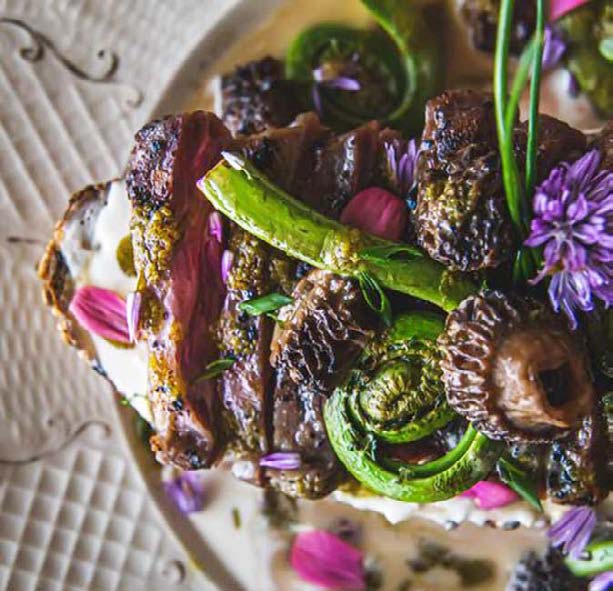
It’s because wild animals walk, run and roam all day, torching fat and building muscle. On the other hand, cows aren’t working too hard to survive. One misconception about “organic” meat is the assumption that the animals are all roaming free in a meadow (and with a rainbow over their pasture) — much like those in the wild do.
That’s not always the case.
An organic, free-range chicken, for example, may be fed organic grain and then raised in a barn with limited access to a tiny, screened-in cement porch. Living this way, the chicken fattens quickly and is unable to move and burn the “organic” calories it’s consuming.
Don’t get me wrong. I’m not attacking our amazing, hard-working beef, poultry and pork producers. I’m attacking our own complacency. We’ve allowed our food system to become what it is. A food system once based around family connection, quality ingredients and nutrition has been replaced with convenience, refined sugars, carbohydrates and screens.
2. Low Risk Of Foodborne Illness
I’m a restaurant guy. Obviously, this one is making the list. I deal with food safety and proper food handling in the restaurant every day. Over the years, safety features have been ingrained into my core by angry chefs and even angrier health inspectors. From my own experience, it’s better to handle as much of your own food as humanly possible. Control the process, control the quality.
Some large-scale factory-farmed animals are deprived of their natural diet and forced to live in stressful, dirty, confined environments, making them more susceptible to disease and having very little quality of life. Suddenly the time and effort involved in processing your own meat doesn’t sound so bad.
A wild animal is likely a healthy animal, and small, clean, reputable meat-processing facilities make contamination an unlikely issue. Though you should always cook and handle any meat properly, with wild game, you don’t need to worry about foodborne pathogens the way you would with grocery store meat. With hunting…you are in control of that entire process. It’s your hands and your hands only taking the process literally from field to plate.
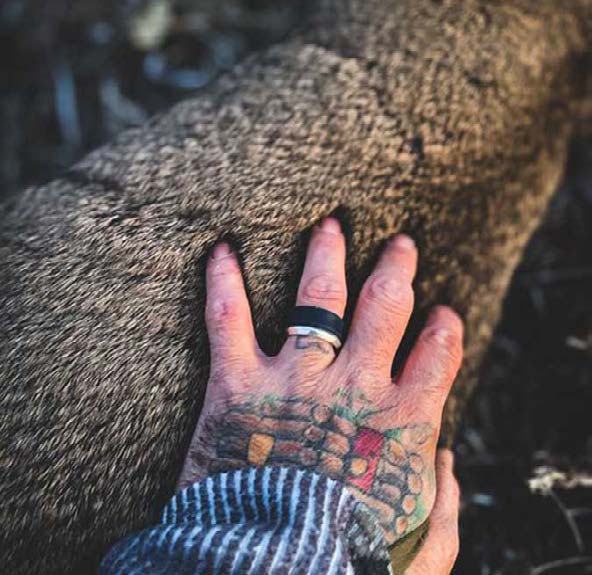
Don’t get me wrong. If you are getting your meat from a local farmer who slaughters and processes it on-site, you’re good. Instead, here is typically where foodborne illness and bacteria can be spread. When you purchase regular old mass-produced beef, you’re talking about an animal that is trucked to slaughter, trucked to processing, processed, then trucked back to central storage, then dispersed to grocery stores, where it is re-packaged and put on shelves. That’s a lot of hands.
The large-scale meat production industries are failing us, confusing us, and quite frankly, making us sick. Foodborne pathogens have actually become so common that health officials warn against washing chicken for fear of salmonella splatter, while toxic ammonia-based fillers are added to ground meat to help kill E. coli. A 12-year study at the Center for Science in Public Interest says that ground beef and chicken are two of the most dangerous items you can have in your kitchen.
According to Consumer Reports, 97% of chicken tested contained bacteria that could make you sick. Meanwhile, salmonella and E. coli have become so common in ground beef, the Center for Science in the Public Interest has declared it “one of the riskiest foods to have in your kitchen.”
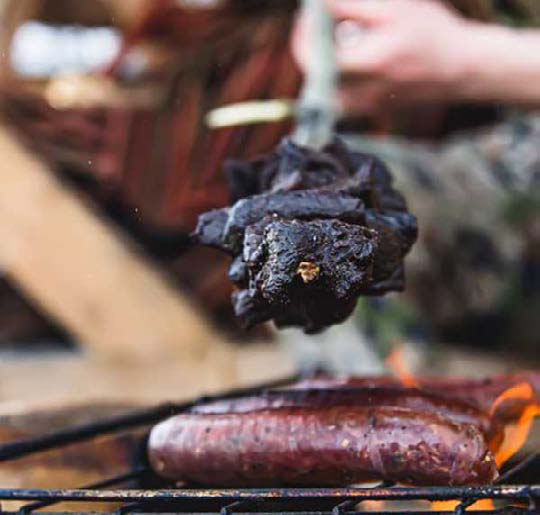
3. No Hormones Added
You are what you eat. That’s how I feel about what my family and I put into our bodies. If I’m being honest, consuming more hormones is not really on my list of wants and needs. I’m pushing 40, so I’m sure some residual testosterone wouldn’t hurt me, but that’s beside the point. By now, we all know the detrimental effects of hormone-laden meats, especially to young children. Yet they are still commonly used by the conventional meat and dairy industries. For hormone-free insurance, opt for wild game or hormone-free, grass-fed meats from a trusted small producer.
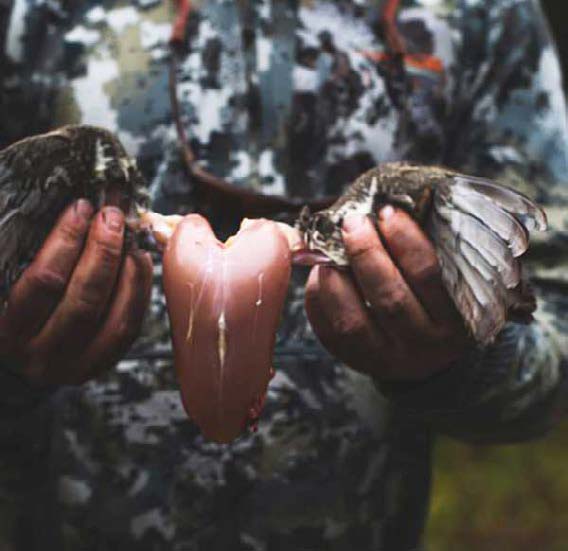
4. You Are Bound To Find Other Wild Food
Yes, I know, we are talking about meat, but this aspect of sourcing my own food has been a fun and healthy addition to my season. Morels, fiddleheads, ramps, chanterelles, wild asparagus, Labrador tea, spruce tips and sumac are just a few off a long list of wild ingredients I’ve been able to add to the repertoire. Plus, we haven’t even talked about berries! I’ve stumbled upon old homesteads with enough raspberries and saskatoon berries to feed an army. Rather than leaving empty- handed from a shed-hunting excursion, I leave with my boots full of mushrooms. Again, in today’s food climate, I’ll take any free food I can get my hands on and when you put ingredients together that co-exist naturally, the food just tastes better. Sumac, blueberry and venison over fire on the land you’ve harvested those ingredients from? I’m drooling already.
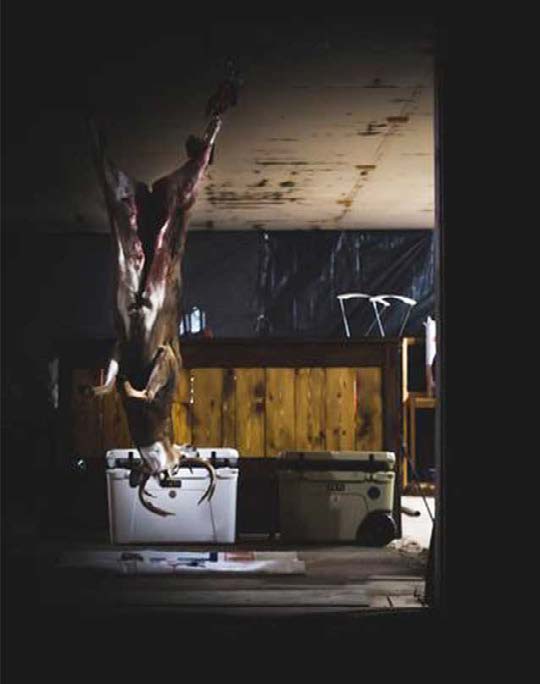
5. No Antibiotics
With growing concerns about the over-consumption of antibiotics and antibiotic resistance, you can rest assured that a deer steak or elk heart won’t contain antibiotics or contribute to the proliferation of super- bugs. Canada and the European Union already have banned the use of antibiotics and the U.S. is currently figuring out a plan to do the same. Unless I know a meat is antibiotic-free, I’m picking the deer steak for my family whenever I can.
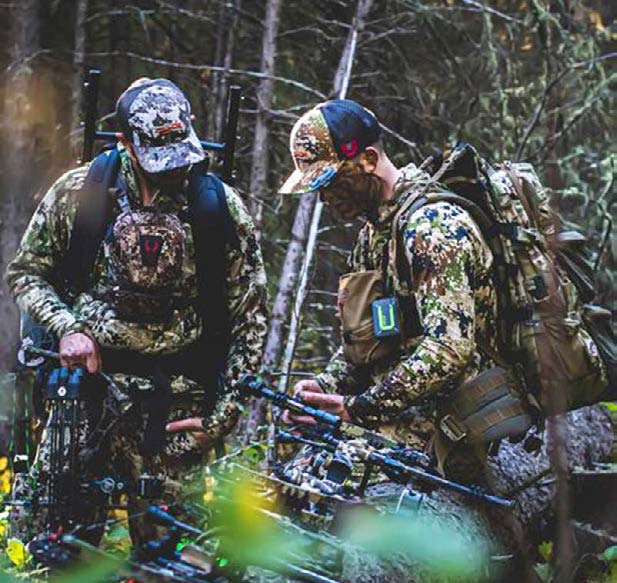
6. Affordability
Financial health is still health and eating healthy costs money. It’s more expensive to eat healthier; that’s just a fact. Be it for ethical reasons or health reasons, if you want to know how your food was treated and what was put into it, it’s going to cost you (more).
I am a huge advocate and lover of sustainable, ethical farming practices. My restaurant is based on this very premise alone. Find as many local producers as possible, bolster our local economy while also being able to shake the hands of our farmers, all while being able to watch our kids play together and share the dinner table. That is the dream.
I’m also aware that there is a steeper price tag associated with knowing where your food is coming from and how it is produced. It’s not cheap to eat this way. But harvesting your own meat can pass along some serious savings while not compromising your food values.
The average North American consumes more than 3,600 calories daily – a 24% increase from 1961, when the average was just 2,880 calories. Grains, rice and cereal account for 20 percent of that overall increase, while the use of vegetable oils makes up over half of that spike. Even the physical size of our plates has changed from six inches to 10 inches. Don’t even get me started on screentime at the table.
Secondly, we’ve all seen just how connected our food chain is to global pricing at our local grocery store as of late. Over the past year, the average consumer has seen a 10+% increase in food pricing. Certain ingredients at our restaurant have gone up 200%! With the current state of affairs in the global food market…stuffing your freezer full of free food sounds like a pretty damn good plan to me.
According to Business Insider, the average North American consumes 180 pounds of meat annually. That’s 720 pounds for a family of four. With different pricing for different cuts of meat, let’s estimate the average price at $14 per pound. Given that, 720 pounds of meat x $14 per pound = $10,080 annually.
Harvesting much of your own mean obviously means some serious annual savings for reconnecting with your heritage. The last freezer full of venison I had cost me not much more than time and hard work. A bull moose and a pre-rut Whitetail buck on the ground and my family of three was what I like to call “meat rich” for almost two years. Our world is filled with wild, free, sustainable food. We just have to be willing to find it.
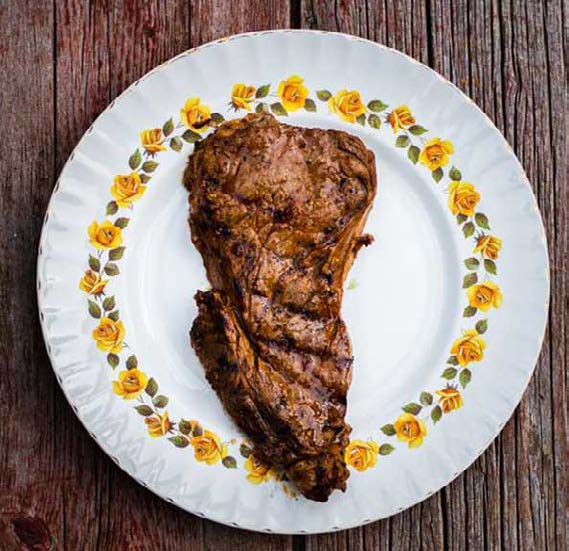
7. Food Security
Food security, as defined by the United Nation’s Committee on World Food Security, means that all people, at all times, have physical, social, and economic access to sufficient, safe, and nutritious food that meets their food preferences and dietary needs for an active and healthy life.
Remember the C-word (Covid)? Remember the empty meat shelves, exorbitant food prices and supply chain breakdowns then?
During the food shortages, my email inboxes were full of messages. There was a lot of sheer panic from the writers. As a restaurateur and hunter…I was a very popular guy. “We have no meat left…I’m getting nervous. ” Others included “Would you sell any moose meat?” and “Can you teach me to hunt?”
These were just a few pleas pulled straight from my inbox in 2021. It was a scary time if you were not self- sufficient. Having a full freezer and learning to preserve the seasons with canning and pickling, I felt okay in a world where others seemed to be scurrying like mice.
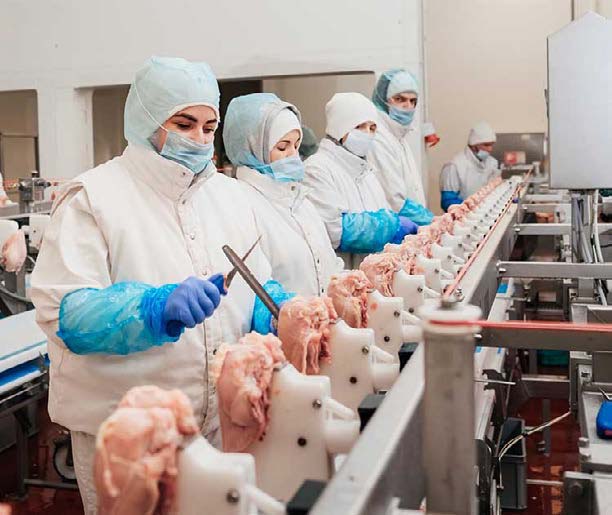
8. A Healthy Dose Of Omega-3 Fatty Acids Plus A Lower Dose Of Omega-6
When you think Omega-3s, you probably think wild salmon—but did you know that ingredient is also found in wild game and grass-fed meats? According to a study by Purdue University, wild game such as deer and elk have ideal ratios of Omega-3 to Omega-6 fatty acids, making them one of the healthiest sources of good fat on earth. Most of us are down with Omega-3s and kind of understand why they are good for us. But what about this Omega-6 character?
Omega-6 fatty acids can raise your blood pressure, lead to blood clots that can cause heart attack and stroke, and cause your body to retain water. We don’t eat nearly enough Omega-3, which can reduce our risk for heart disease and cancer. According to the Linus Pauling Institute, Omega-6 fatty acids also increase inflammation in the body. Chronic inflammation is associated with health conditions including obesity, diabetes, cancer and rheumatoid arthritis…which coincidentally are all on the rise in our society.
Wild animals eat more grass, green leaves and plants while constantly roaming, thus building more muscle than their domesticated counterparts. That leads to leaner meat with lower Omega-6 fatty acid content. Grass- fed animals do not have an unhealthy level of Omega-6 thanks to a natural grass diet. You see…cows are meant to eat grass, not corn and grain. So, if you are concerned about your Omega ratios, it’s grass-fed, wild game or bust!

9. By Choosing Wild Game, You Reduce Your Carbon Footprint
This isn’t necessarily an individual short-term health benefit but more a “for the greater good” kind of health. Aside from the obvious health detriments to humans, confined factory farming is taking a huge toll on the environment.
Its offenses include the proliferation of antibiotic- resistant bacteria, the decimation of aquatic ecosystems and the pollution of soil, groundwater and air with heavy metals, phosphorus, nitrogen, pathogens, ammonia, hormones and methane. That’s not even to mention the abuse and mistreatment that any animals have to endure. Confined, large-scale factory farming hurts the planet as much as it hurts us humans, and it harms the animals being farmed and the environment they are being farmed in.
10. Mental Health
According to Mental Health America, the current status of mental health in North America is abysmal, to say the least. Here’s what’s reported in measurements of statistics just from 2019 to the present:
- 426% increase in anxiety
- 448% increase in post-traumatic stress disorder
- 273% increase in depression
This is terrifying, and that’s not the scariest part… these statistics are higher in children.
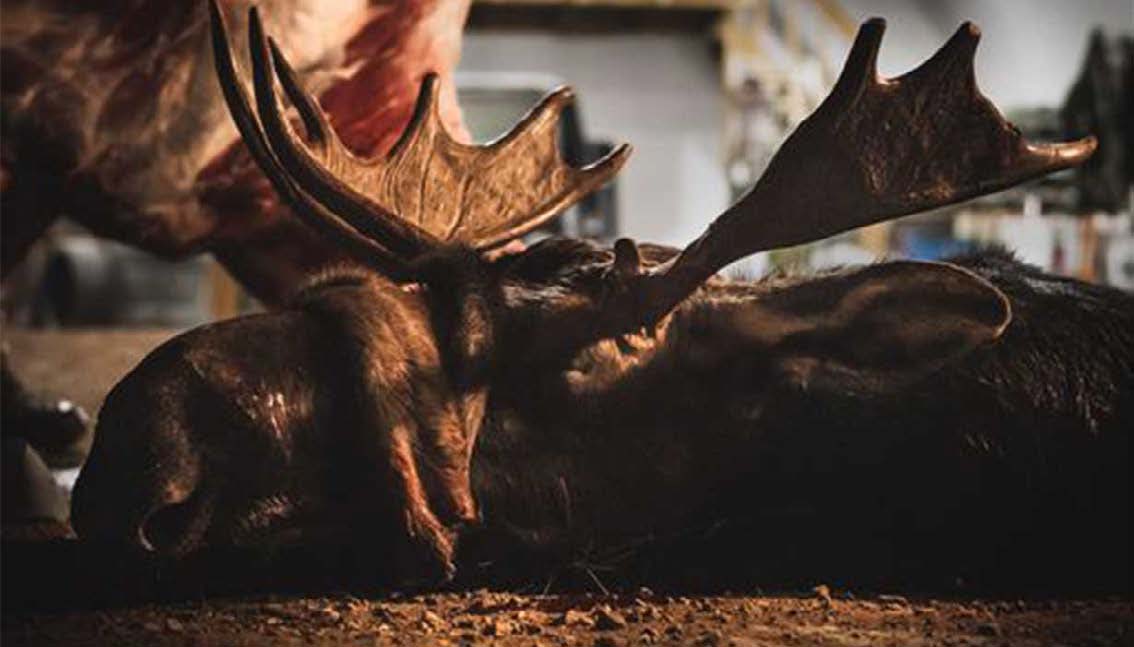
As a benefit, pursuing, preparing and ultimately consuming wild game meat has enough positive mental health effects to write its own article.
That reminds me of a comment I heard from an older, British gentleman that really struck a chord with me: “No one has had an existential crisis while in the pursuit of wild game.” I mean, I’m not sure that’s entirely true. I’ve had a few track jobs that may have caused a bit of a crisis if you ask my hunting buddies. Joking aside, it’s pretty darn hard to concentrate on anything but the task at hand while hunting. Be it the pursuit, the prep, the processing, you must be mindfully present.
Having a greater purpose. Connecting with nature. Comfort in solitude. Spiritual awakening. Mind-body connection. Physical fitness. Finding a passion, prepping, planning and organizing. Consistency. All of these elements have positive effects on someone’s mental health. Coincidentally, they also are key factors in becoming a successful hunter. Call it forced mediation or call it hunting…it’s good for the brain either way, and it has helped me with my own personal mental health struggles more than I could put into words.
So yes, the science is there. The nerds have done the math. Biologically, eating wild game is healthier for us. However, there is something intangible we all feel that I’m not sure science can fully explain. It’s a direct connection to the hunter-gatherer inside all of us. That feeling of overwhelming pride, care, love and accomplishment when you feed your family wild meat that you, yourself have pursued, harvested, processed, cooked and served. There is no better feeling.
Explain that one, nerds.
Per our affiliate disclosure, we may earn revenue from the products available on this page. To learn more about how we test gear, click here.





